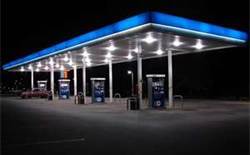Full-Service Gas Laws Fuel Debate Among Oregon drivers
 |
SEATTLE - January 27, 2016: Oregon's decades-long tradition of mandating full service at gas stations across the state may be facing increasing opposition, according to the latest poll from PEMCO Insurance. The locally based insurer found that while two-thirds of Oregon drivers generally favor the full-service experience, nearly half say they lean toward supporting a change in Oregon's laws to allow drivers to pump their own gas.
According to the PEMCO Insurance Northwest Poll, which surveyed Washington and Oregon drivers, 69 percent of drivers in Oregon favor full-service gas, where an attendant is required to pump all motorists' fuel. Of those drivers, 44 percent say they strongly favor the law.
Just north in Washington, where there is no law requiring that an attendant pump gas, most drivers (51 percent) oppose mandated full service, but many Washingtonians are intrigued by it – 40 percent say they'd lean toward or strongly favor required assistance at the pump.
PEMCO's data comes on the heels of a controversial new Oregon law that took effect this month, giving non-commercial drivers in less-populated rural counties the option to pump their own gas when an attendant isn't present between 6 p.m. and 6 a.m.
According to the poll, drivers are closely divided with this prospective change. While half of Oregon drivers (51 percent) say they prefer to keep the law the way it is, a significant number (41 percent) think it's time for a change – they'd favor amending the law to allow self-service in every county.
"We're interested to see how Oregon drivers and gas stations react to the changes, but we don't line up on either side of the issue," said PEMCO spokesperson Jon Osterberg. "We were actually pretty surprised to see so many Washingtonians in favor of full-service gas – maybe some people are tired of stepping out into the weather and getting their hands dirty!"
Female drivers might agree. The poll found that twice as many men compared to women favor changing the law to loosen gas-pumping restrictions (58 percent vs. 27 percent).
Regardless of who's pumping, when asked which fuel blend drivers put in their cars, the poll finds that three-quarters (76 percent) opt for regular octane fuel – a choice, those drivers say, that's primarily motivated by regular's relatively low cost.
In fact, cost is a significant driver for all gas-guzzling motorists, even those who choose higher octane. Nearly three out of four (71 percent) say they're willing to drive up to 10 minutes out of their way to find lower-priced gas.
About one out of 10 say they fuel up with mid-range gas, and an equal number (9 percent of drivers) choose premium. Those drivers buying premium choose it primarily based on their car's manufacturer recommendations, followed closely by their belief that higher octane fuel improves their vehicle's performance.
"Some cars are engineered for higher octane, especially high-performance vehicles. Without it, low-octane gas can cause detonation, commonly called 'engine knock,' which can be harmful and robs performance," Osterberg explained.
Perhaps troubling, the poll revealed that some drivers might be using the wrong gas altogether. One-quarter of drivers who usually select regular or mid-range (24 percent) are uncertain they're putting the right gas in their vehicle – that's one in four drivers who might be burning a lower octane than their car requires.
"I suspect that many people buy regular gas regardless of what the factory recommends, because it's cheaper than premium. That may be OK with some newer cars that monitor and automatically adjust the engine settings when they detect low octane. But many cars don't do that, and over time that can harm your engine," Osterberg said.
But the poll also found that drivers are generally conscientious about frequently filling up. Two out of three drivers fuel up before the low-fuel warning light prompts them to get more gas. Older drivers and those without kids are the likeliest to refuel well before the low-fuel warning comes on.
And how about drivers who wait a little too long before refueling? One in four have ever run out of gas, and of those who have, most (56 percent) they say it's happened just once.


